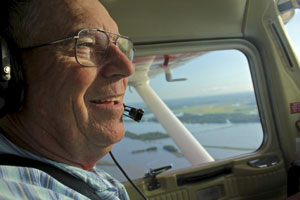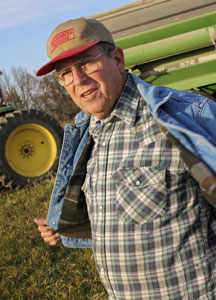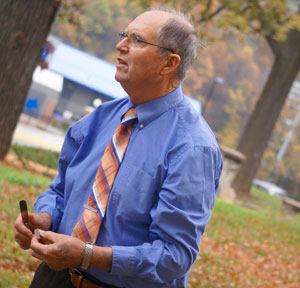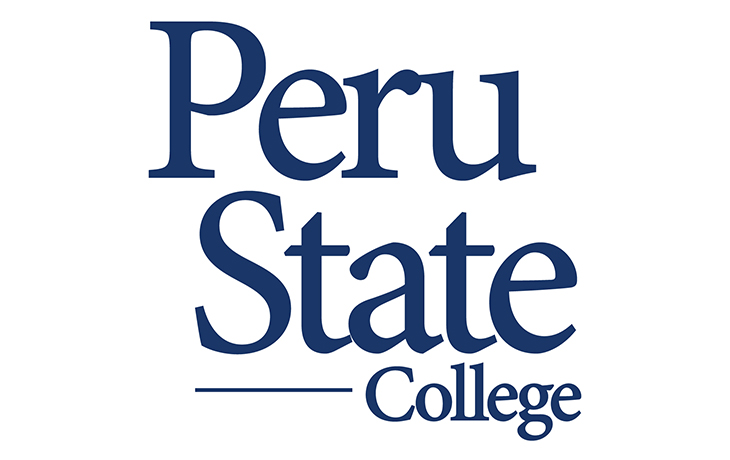FOR IMMEDIATE RELEASE
January 2, 2017, 8:00 p.m. CDT
Contact Jason Hogue, Peru State College Marketing and Communications, 402.872.2429
Peru, Nebraska- Dr. Daryl Long began working for Peru State College in January of 1967. He has retired,
before the new semester begins on January 8, but in January of 2017.
Long said, “Leaving is bittersweet. I will miss all the folks I have worked with
over the years. I stayed here at Peru State because the students and faculty are
outstanding. It’s not everyday that someone takes their first job and it is such
a great fit.”
Dr. Dan Hanson, president of Peru State College, writes, “Dr. Long dedicated his career
to students and to Peru State College. His legacy will live on in the lives of his
students for years to come.”
Long earned his bachelor’s and master’s degrees from Iowa State University. His doctorate
is from the University of Nebraska. Long also farms in the area and has been an avid
flyer.
His devotion to energy includes (at least) teaching nuclear science, alternative energy
and ethanol production for small farms.

Dr. Long flying during the 2011 floods. Photo by Bill Clemente.
Coming to Peru State:
“I was trying to finish the research for my thesis in the summer of 1966, when three
people came to coerce me to teach a three week summer school class on conservation
for elementary teachers at Peru State. They would not take no for an answer, so I
found myself on the Campus of a Thousand Oaks (and two squirrels),“ Long explains.
The arrangement became more permanent when, “In October of 1966, Dr. Keith Melvin,
Dean of Academics, came to Lincoln to entice me to teach Calculus and Analytical Chemistry
starting in January of 1967. It worked!”
In Long’s tenure, a lot of things have changed on campus. As part of Peru State’s
preparation for the sesquicentennial, Dr. Long was extensively interviewed for his
insight on the campus.
Long told Dan Sullivan of the Omaha World-Herald, and editor of the Peru State 150th
Anniversary Book, “I knew I wanted to be in a small rural setting. The big city did
not appeal to me. It was neat, I’d never been on a small campus like this before.”
“I like it because you’re teaching students from rural America, and many of them are
first-generation college students. They have a great work ethic and attitude. I enjoy
being around people with those characteristics.”
Peru State College in 1967:
“When we moved to Peru in ’67, the rule of thumb was that if you worked at Peru, you
had to live in Peru,” Long told Sullivan.
Whether it was written or not, “It was something that they explained to you when you
were hired.”
“So we never had a snow day.” The only time was a blizzard at the end of Christmas
vacation, when students couldn’t get back.
Long adds about T.J. Major, “When I interviewed (with Dr. Melvin at that time) I asked,
what about your elementary school and (he said), ‘we have the best elementary school
in the country. Haven’t you heard of a campus school?’ and I said no. I hadn’t heard
of a campus school.”
Long also recalled the campus changing with the Vietnam war’s end, “I do know that
after the draft ended and the war wound down that the student population did drop.”
However Dr. Long also saw a positive effect on Peru, “I think you did have a change
in attitude, because the students wanted to be in college, not because they had to
be in college to avoid the draft.”
On Students:
Long starts, “Since we’re a small school, everybody gets to know one another. You
get personal help. We know the students and they’re not a number to us.”
“You might have the same student in three or four classes before they graduate. You
see them progress, and that’s really fun for me.”
“You donate your whole life here, and you say why did you pick to stay at Peru and
you think, well, I wanted to teach and you love that you’re at a small college in
rural America and you got to know people, which was one of my goals. It’s home, it’s
where we are.”
Long adds about struggling students, “They’re willing to open up because you’ve had
communication with them. Most people, if you go to a big college or university, you
just drift away.”
Long remarks on overall change, “We’ve outlawed smoking . . . and what has replaced
cigarettes with students? The smart phone. As soon as they get out in that hall, students
are on their phones. We’ve replaced cigarettes with a cellphone

Dr. Long on his farm. Photo by Bill Clemente.
Peru State and the region:
Long said the school has a long history of presenting enlightening events to be enjoyed
not only by students, faculty and staff, but also by residents of the surrounding
area. He pointed out that at one time Peru’s auditorium was the largest indoor gathering
place in southeast Nebraska.
“People came to Peru because it was the center of everything,” Long said. “People
were used to looking up to Peru.”
Dr. Long also thinks that Peru’s location provided better access to more students
in rural southeast Nebraska.
Long also exemplifies Peru State’s commitment to the region. Among his many commitments,
he has served as a board member of Tri-State Missouri River Tourism, the Peru Chamber
of Commerce, the Nemaha County Development Corporation, Nemaha County Hospital, Southeast
Nebraska Development District and River County Economic Development.
Teaching:
In 1980, Dr. David Pippert, chairman of the Division of Natural Science wrote, “Long
is a highly regarded and dedicated teacher.”
Dr. Clyde Barrett, long-time vice president for Academic Affairs, added at the time,
“Dr. Long has been very willing to help promote the college and his department in
the off-campus settings. He has helped judge many science fairs, he has participated
in workshops on computer utilization and also in workshops on energy.”
At the end of his career, Long taught courses in chemistry, energy and math. His areas
of interest include calculus and current discoveries in science.
Among his many academic memberships, Long has belonged to the National Council of
Teachers of Mathematics, the American Mathematics Association, the Soil Science Society
of America, Sigma Xi and Lambda Delta Lambda.
Dr. Timothy Borchers, current vice president for Academic Affairs, said, “Dr. Long
taught thousands of Peru State students the importance of science and math. He was
also a strong supporter of campus activities. We’ll miss having him on campus.

Dr. Long teaching on the Peru State quad. Photo by Bill Clemente.
Retirement:
Long writes, “It is now time to retire. I wish to thank you, past employees and the
greatest students for a very enjoyable and satisfying 50 years.”
“Peggy and I decided to come to Peru State College for two years and move on. We
fell in love with Peru State and the vicinity. Two years extended to 50 – not bad
for a position I never applied for.”
When asked for advice on finding a 50-year career to match his, Long declined, “I
don’t have any advice. I just fell into this perfect fit and couldn’t ask for a better
place.”
###
For more information, visit www.peru.edu or call 1-800-742-4412.
